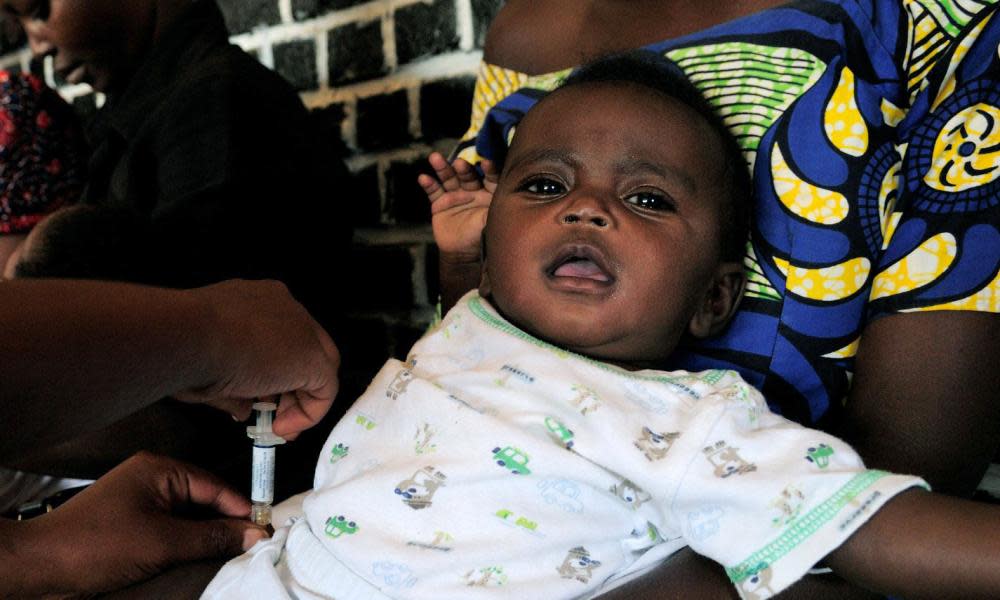How successful were the millennium development goals?

Did the United Nation’s millennium development goals (MDGs) make any difference? Perhaps no question is more important for assessing the results of global policy cooperation between 2000 and 2015.
But this is a difficult question to answer, because pathways of cause and effect are difficult to discern. In our study we examined which trajectories changed, for better or worse, and to what scale of human consequence. Here we highlight three key findings.
At least 21 million extra lives were saved due to accelerated progress
Our results show that the clearest victories during the MDG era were in matters of life and death. We calculate the number of lives saved beyond “business-as-usual” pre-MDG trends on child mortality, maternal mortality, HIV/Aids, and tuberculosis. We also look at malaria, which is predominantly a subset of child mortality. These indicators show evidence of major accelerations in rates of progress during the 2000s, with the exception of maternal mortality, which experienced more modest acceleration.
The upshot is that somewhere between 21-29 million more people are alive today than would have been the case if countries had continued their pre-MDG rates of progress. (The range depends mainly on whether we use child mortality trends from 1990-2000 or 1996-2001 as the pre-MDG reference period.)
As shown in the graph below, approximately two-thirds of the lives saved were in sub-Saharan Africa, around a fifth were in China and India, and the remainder were in the rest of the developing world. Between 8.8 to 17.3 million of the lives were saved due to faster progress on child mortality; 8.7 million due to expanded treatment for HIV/Aids, 3.1 million due to declines in TB deaths, and approximately half a million due to improvements in maternal mortality.
Some successes more impressive than others
One of the core tensions in assessing outcomes over the MDG period is to distinguish between the amount of progress achieved and changes in the rate of progress.
For example, the UN celebrated improved access to drinking water as an early MDG success. But were countries already on course to achieve this as of 2000? We conducted many tests for differences in mean rates of progress and found that trends varied considerably across issues and geographies. Positive changes were concentrated in sub-Saharan Africa and low-income countries (as classified by the World Bank in 2000).
The graph below shows our estimate of the number of lives improved, or not, due to changes in trends on a range of indicators. One positive result here is that as many as 471 million extra people have been lifted out of extreme poverty as of 2013 (the most recent year with available data), compared to 1990s trends. As many as 111 million more people also completed primary school, although official data don’t allow us to break that number down by the same geographic groupings, so it’s not included in the graph.
Meanwhile, for water and undernourishment, accelerations in the majority of developing countries were outweighed by slowdowns in the rate of progress in many populous countries, which generated negative overall numbers for our estimate of incremental lives improved. For sanitation, the aggregate figures are only modestly positive.
Low-income countries accelerated more than middle-income countries
Our findings highlight a major difference in trends among low-income countries (LICs) versus middle-income countries (MICs).
The graph below illustrates this by plotting average (population-weighted) rates of progress for both LICs and MICs, when excluding India and China from the respective calculations. The vertical axis shows how much each group’s annual rate of progress changed before and after 2000: a ratio of 1 indicates no change, a ratio of 2 indicates a doubling in the rate of progress, and so forth. The horizontal axis measures each group’s relative amount of progress toward eliminating its respective problems from 1990 to 2015.
The LICs are all somewhat above and to the left of MICs in the chart, indicating more acceleration but smaller relative gains. Meanwhile MICs tended to see larger relative gains but less acceleration, since they were already achieving steady progress prior to 2000.
So what does this mean for the SDGs?
Our estimates draw from available data at the time of writing, so results may be updated as future data revisions are released. In the meantime, the findings dispel some common myths about the MDGs.
They show that, especially on matters of life and death, 2015 outcomes were not on track to happen anyhow. Some shifts were dramatic, and Africa was responsible for many of the greatest incremental gains, not simply China and India.
However, outcomes on basic needs were mixed. The diversity of trends prompts clear questions of why: What differences in public and private action led to such different results across geographies and issues?
Answering such questions is crucial if the world is going to have a shot at achieving the UN’s ambitious sustainable development goals for 2030.
An earlier version of this blogpost was first published by Brookings.
Join our community of development professionals and humanitarians. Follow @GuardianGDP on Twitter. Join the conversation with the hashtag #Dev2030.

 Yahoo News
Yahoo News 
